Hitomi Aikawa: Sweet
Sweet is the title of percussionist Hitomi Aikawa’s debut album. It was recorded and released in Japan in 2018 and contains fourteen of her compositions. A multi-instrumentalist, Aikawa plays various instruments on the songs and is joined on many of them by special guests Masaki Hayashi and Eri Uenoyama on piano, Hiroshi Suzuki on woodwinds, and Megumi Hattori on vibraphone.
As for the instruments Hitomi Aikawa is using on each track, the details are not listed on the CD or in the liner notes. However, clues can be found on her website, where a list of her percussion collection is displayed, and it can be fun to use your ear to try and figure out which instruments are producing the sounds you hear as you listen to Sweet. Her large percussion collection numbers in the dozens and ranges from mallet instruments (vibraphone, marimba, xylophone, glockenspiel), hand drums (djembe, cajón, congas, bongos, timbales), tambourines, castanets, triangle, cymbals, chimes, blocks, Afro-Latin instruments, and many others.
The track listing lays the songs out in an interesting sequence. There are a number of tracks were Aikawa plays alone, using different drum and percussion instruments for brief interstitial-style episodes lasting anywhere from seventeen seconds to just over a minute. In this way, tracks #1, 3, 5, 7, and 10 act as brief intermissions, like scenes changes between her longer songs. In these brief sketches, Aikawa creates rhythmic ambiance in an effective and transitionally interesting way.
Most of the album consists of her other, longer composed songs, averaging about four to five minutes each. It is on these songs where Aikawa has her special guests join her to make up a different format from song to song — not only do the guests change, but she herself switches between different instruments, like Afro-Peruvian cajón, hand drums, cymbals, chimes and bells, and marimba, vibraphone, and xylophone. Aikawa and her guests combine in duo and trio forms such as Aikawa plus piano (Masaki Hayashi and Eri Uenoyama), Aikawa plus alto sax/soprano sax/clarinet (Hiroshi Suzuki), and Aikawa plus vibraphone (Megumi Hattori). Some of these group-based highlights are found on track #2 “Silver Children” with its ancient folk style melody with subtle jazz elements, the exciting 11-beat meter #4 “Basilisk” with its tricky shapes and lines, the refreshing early morning sound of #6 “Earth-colored Gem” (where Aikawa plays mallets, piano, and all other instruments alone), the dramatic and adventurous #8 “elk”, and the entrancing #9 “I’m good more.”
The final four short songs make up a suite starting with track #11. Here, the wordplay hidden in the album title finally clicks: suite/sweet. In addition, the title of each short song in the suite (“Choice” [チョイス], “Alfort” [アルフォート], “Marie” [マリー], and “Galbo” [ガルボ]) is also cleverly chosen, as each song names a famous Japanese sweet, a brand of chocolate or butter cookies and biscuits commonly seen in supermarkets and Japanese convenience stores. Inspired by the sweets, Aikawa uses them as appetizing musical ingredients for creating musical visions out of them. #11 “Choice” is straight-laced with bubbling heat, #12 “Alfort” is a folky up-and-down march, #13 “Marie” is dreamy and melancholy, and #14 “Galbo” is a swift jazz-classical quickstep to the exit.
Liner Notes
(Translated from Hitomi Aikawa’s original Japanese liner notes.)
01. Sand (砂, suna)
A gray town.
Children are running around in a cloud of dust.
02. Silver Children (銀色の子供たち, gin’iro no kodomotachi)
Ever since the day I saw a certain image, there are some “eyes” that I can’t forget. Iron can be used in many ways, right? It can be made into musical instruments, or weapons.
03. Moon (月, tsuki)
Whether we are looking up at the moon, or when it’s hidden behind clouds, the moon keeps glowing. It’s amazing that it keeps shining even when no one’s looking.
04. Basilisk
It’s not that I wanted to write a song with an 11-beat meter. It was that, when I was writing, one eighth-note was missing.
Come to think of it, it seems that the world is filled with things that we must pretend not to see, or that we mustn’t look at.
05. Play (遊, asobu)
I’ve recently come to think that when adults use the word “play”, it may actually mean taking a break.
06. Earth-colored Gem (地球色の宝石, chikyū-iro no hōseki)
I’ve been alive in this world for 34 years.
The earth is 4.6 billion years old.
It’s such a small and insignificant thing, the self.
07. Ice (氷, kōri)
I really want to try to see an actual aurora.
08. elk
The story of the elk, the king of the forest.
09. I’m good more
It’s often said that as long as you’re living, things are good.
In the past, I didn’t really believe that, but now I truly do.
10. Dance (舞, mai)
I’ve been told that in a past life, I was a gypsy with a tambourine.
Sweet Suite
11. Choice (チョイス)
Life is always a game of options, like a ladder lottery where you can choose where to draw your own lines. In my case, many others have taught me the method of how to draw the lines.
12. Alfort (アルフォート)
Tranquil scenes of a pastoral song, sheep, mountains, blue skies, delicious air, and meadows.
13. Marie (マリー)
The profile of a woman.
14. Galbo (ガルボ)
No matter how much I chase, I just can’t reach it.
It’s only because of the people who support me that I can spend my life in music.
Being able to meet wonderful people, and to converse with them
is the same as encountering wonderful sounds and playing music.
I cherish the sounds that were delivered to me by Masaki Hayashi, Hiroshi Suzuki, Eri Uenoyama, and Megumi Hattori.
And I would like to express my deep gratitude to everyone who got this CD.
Thank you very much.
Hitomi Aikawa
Sweet by Hitomi Aikawa
Hitomi Aikawa - percussion
Masaki Hayashi - piano (#02, 11, 13, 14)
Hiroshi Suzuki - soprano sax (#02, 14), tenor sax (#12), clarinet (#13)
Megumi Hattori - vibraphone (#04)
Eri Uenoyama - piano (#08, 09)
Released in 2018 on Hitomi Aikawa as HICD-001.
Japanese names: 相川瞳 Aikawa Hitomi 林正樹 Hayashi Masaki 鈴木広志 Suzuki Hiroshi 服部恵 Hattori Megumi 上野山英里 Uenoyama Eri
Related Albums
Audio and Video
“Sand” (track #1) and “Silver Children” (track #2) — excerpt:


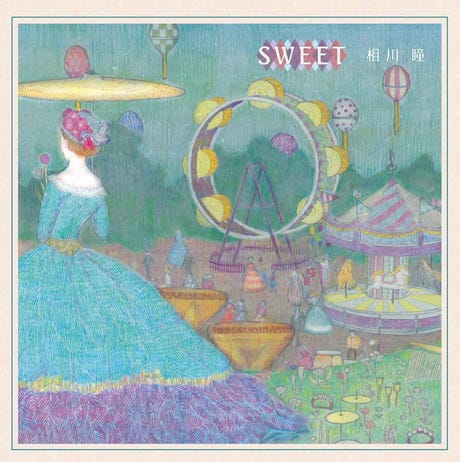
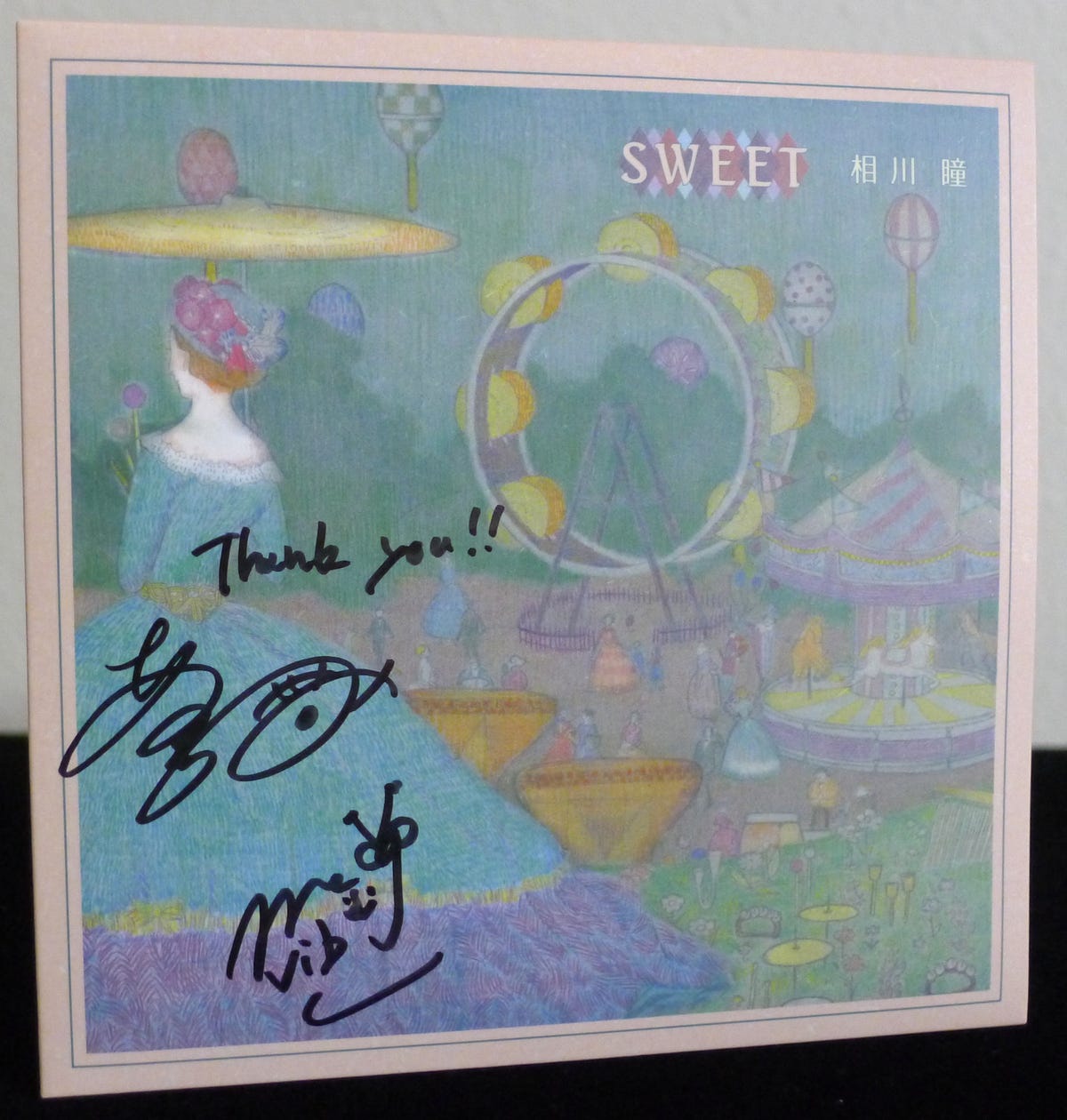
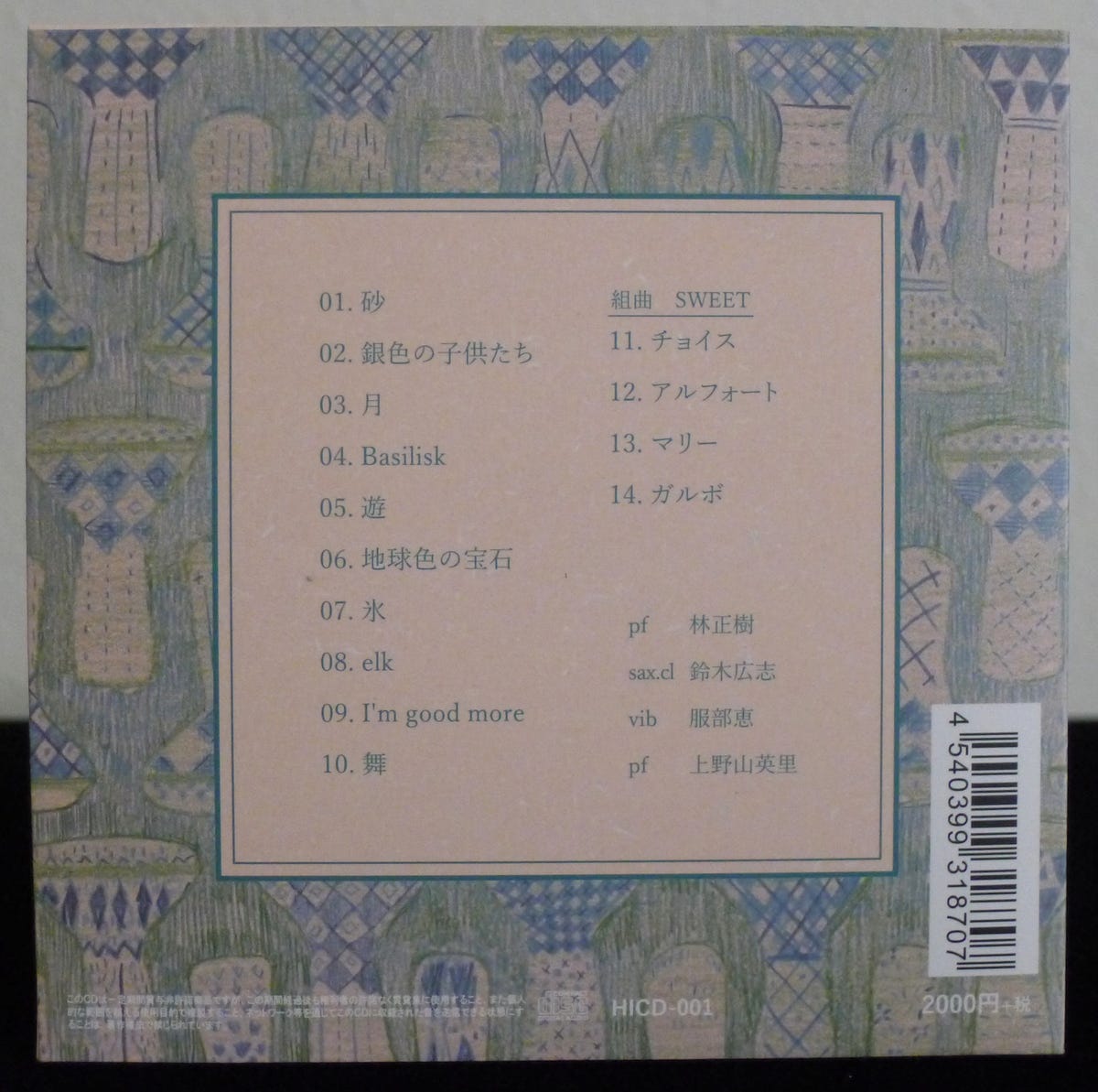
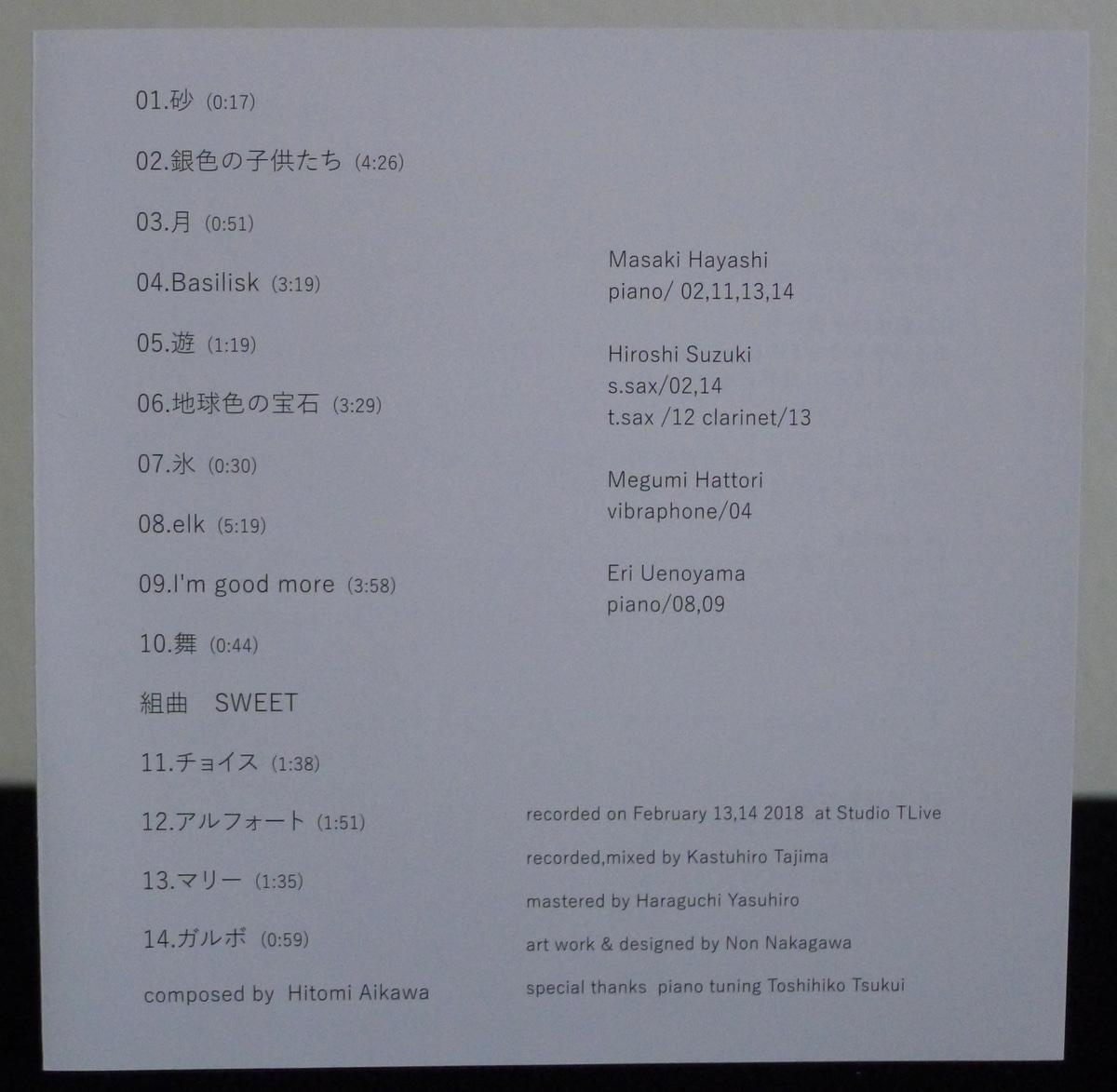
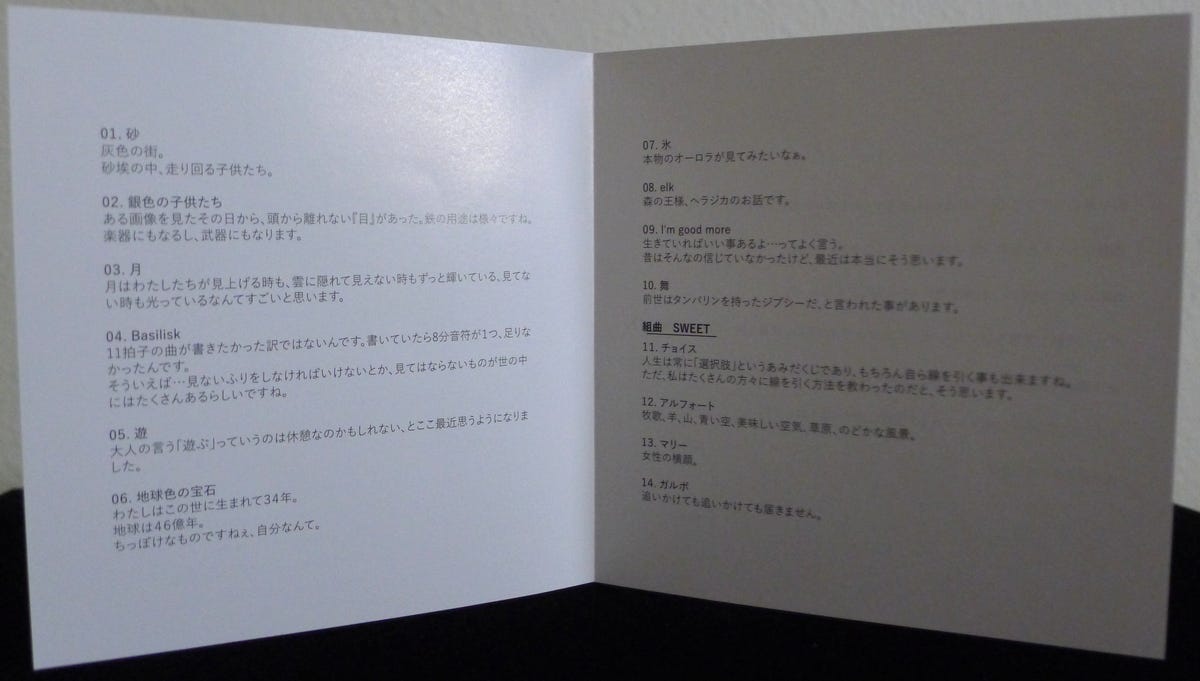
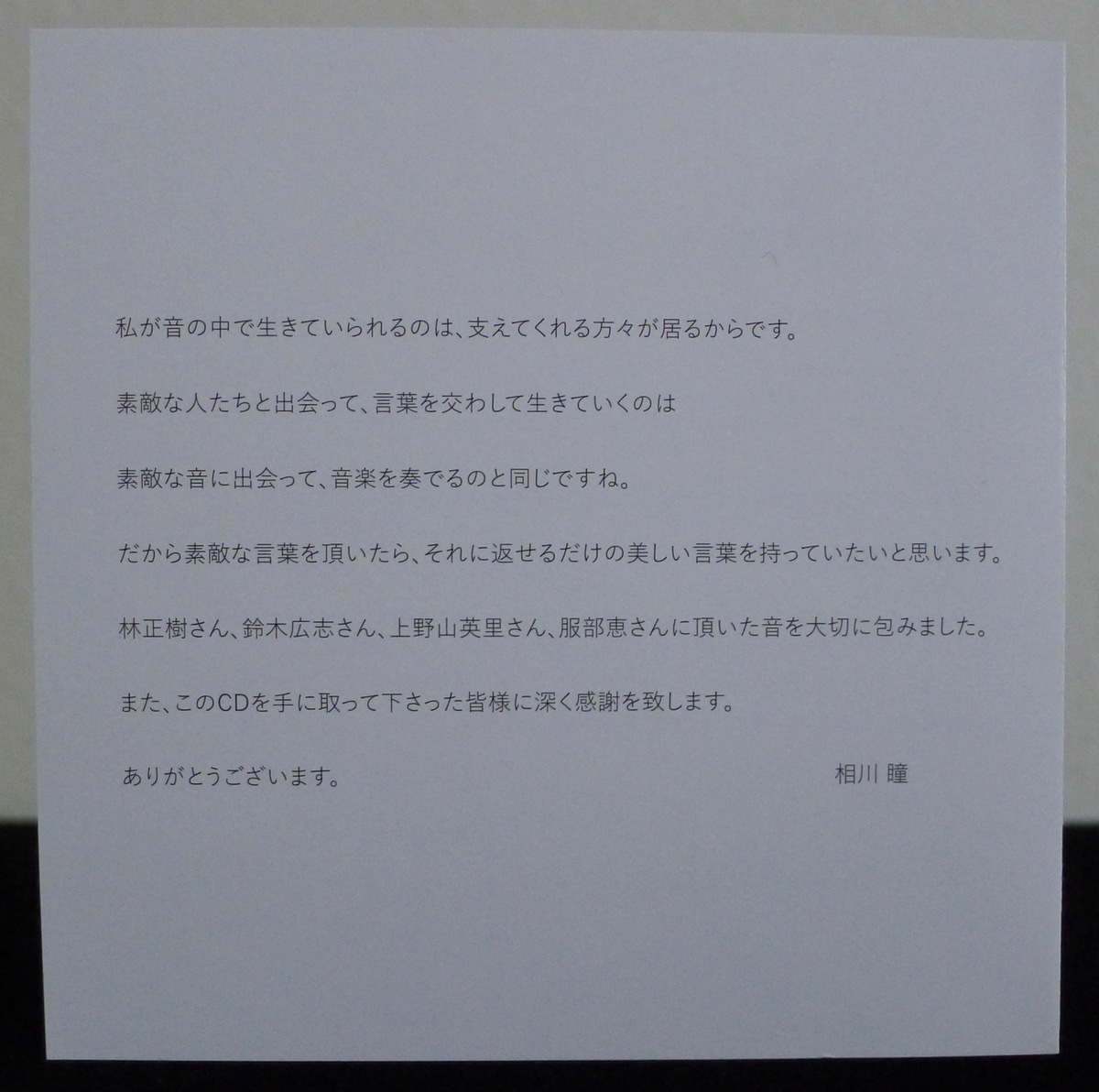
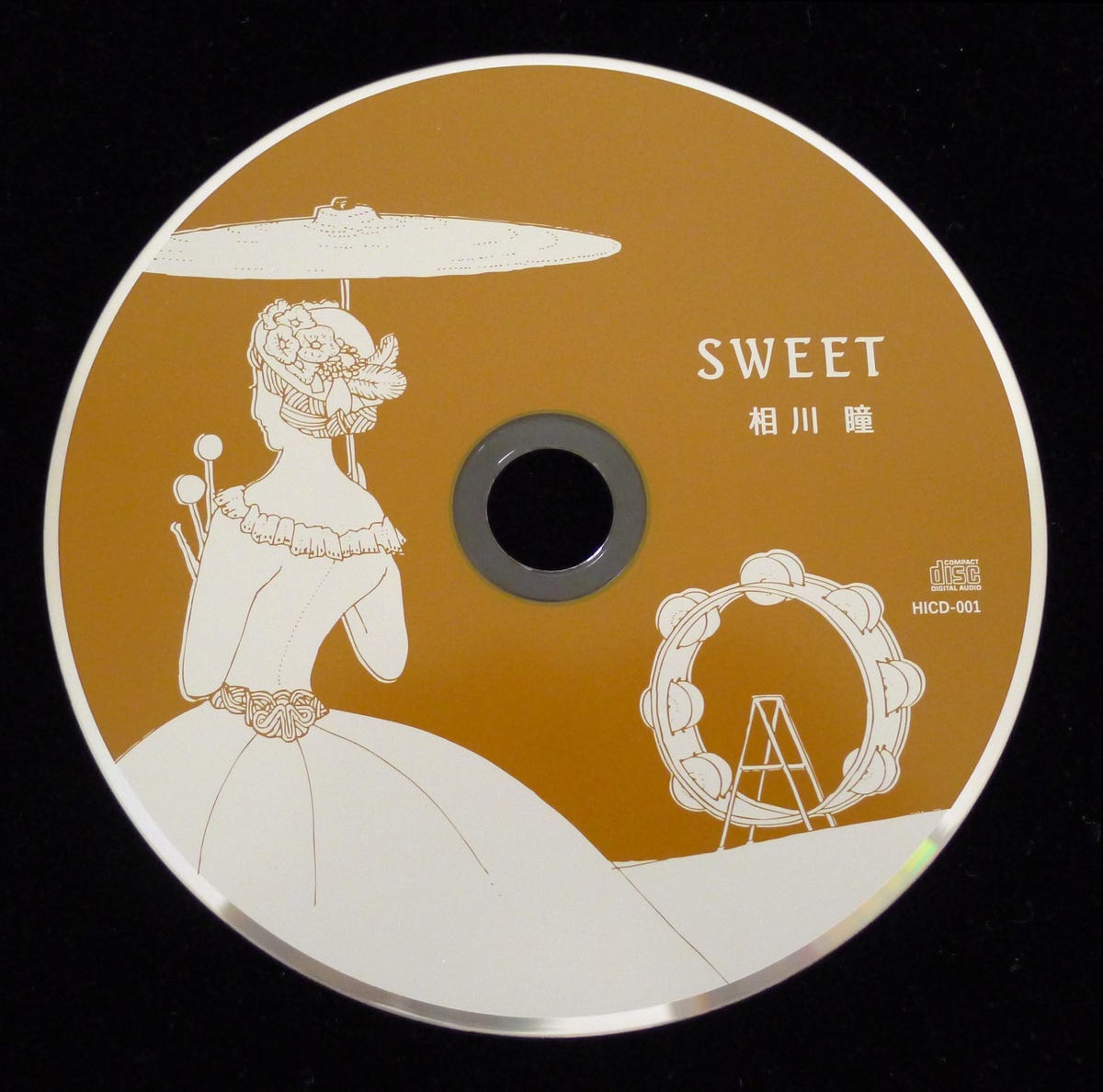
It looks like several of these tracks are included on the album "The angry moon" by Hitoma Aikawa and Shutoku Sato.